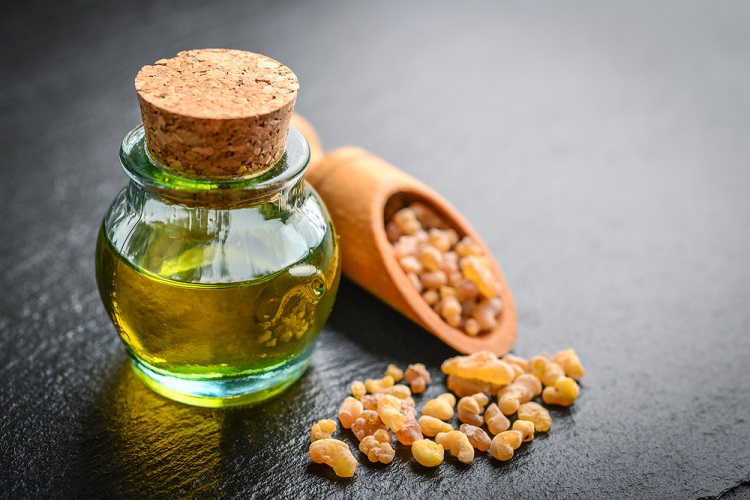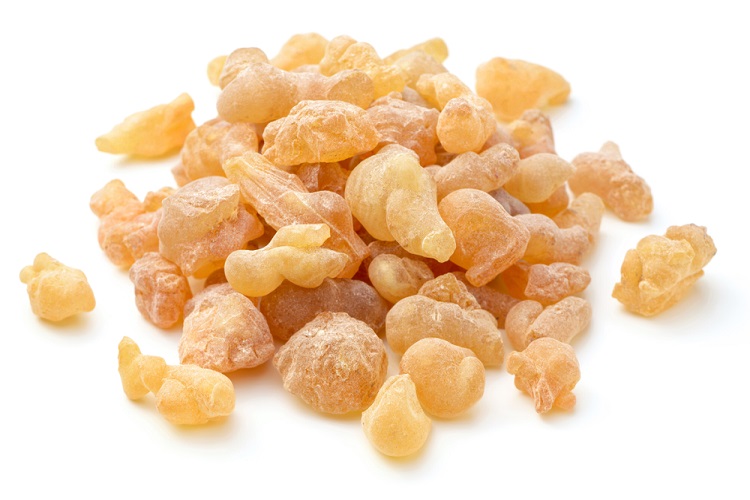How To Use Frankincense Essential Oil For Its Healing And Therapeutic Properties
Since ancient times, people have utilized essential oils for aromatherapy because of their medicinal and restorative characteristics. These properties originate from different plants whose leaves, stems, and roots are prized for their therapeutic qualities.
Frankincense, also known as olibanum, is a popular essential oil used in aromatherapy. It has a number of health advantages, such as boosting immunity, easing chronic stress and anxiety, and lowering pain and inflammation.
High-quality frankincense oil is a good place to start if you’re new to using essential oils. Due to its gentleness, adaptability, and a long list of advantages, it continues to be a fan favorite.

What Is Frankincense?
The resin of the Boswellia carterii, Boswellia frereana, or Boswellia serrata trees, which are frequently grown in Somalia and parts of Pakistan, are the source of frankincense oil. These trees vary from many others in that they can thrive in arid, desolate environments with very little soil.
The name “frankincense” is derived from the old French word “franc encens,” which means “high-quality incense.” Since it was one of the first gifts the wise men sent to Jesus, frankincense has been connected to many different religions over the years, particularly Christianity.
Let’s have a look at the benefits of frankincense oil.

Enhances Immune System Performance And Prevents Illness
According to studies, frankincense has immune-boosting properties that could help fight off cancer, infections, and even harmful germs. In a lab experiment, scientists from Mansoura University in Egypt discovered that frankincense oil has potent immunostimulant properties.
It can be used to stop germs from growing in your home, mouth, or on your skin. This is the rationale behind the widespread usage of frankincense to treat oral health issues.
Studies involving patients with plaque-induced gingivitis have revealed that the antiseptic properties of this oil may help prevent gingivitis, poor breath, cavities, toothaches, mouth sores, and other infections.

Skin Protection And Anti-Aging Properties
Benefits of frankincense include its capacity to support skin and enhance its texture, elasticity, and appearance as you age. It could help heal wounds, lessen the appearance of scars and acne, and tone and lift skin.
Additionally, it might help repair dry or cracked skin and fade stretch marks, surgery scars, or marks from pregnancy.
According to a review in the Journal of Traditional and Complementary Medicine, frankincense oil evens out skin tone while reducing redness and skin irritation. According to studies, frankincense oil’s pentacyclic triterpene (steroid-like) composition plays a part in its calming impact on inflamed skin.

Reduces Negative Emotions and Stress Reactions
It has been demonstrated that frankincense oil can lower blood pressure and heart rate when inhaled. It has the ability to reduce anxiety and depression, but unlike prescription drugs, it has no unpleasant side effects or sleepiness.
According to a 2019 study, the frankincense constituents incensole and incensole acetate can open up ion channels in the brain to reduce anxiety or sadness.

Aids In Digestion
Frankincense supports healthy bowel movements and appropriate digestion. According to research, it may also help to lessen stomach cramps, nausea, and bloating by flushing away extra water in the abdomen. It may also assist to lessen stomach symptoms brought on by PMS.
It accomplishes this by accelerating the release of digestive enzymes, increasing urination, relaxing the muscles of the digestive system, and assisting in the improvement of circulation, all of which are necessary for good digestive health. It has been demonstrated to be helpful in easing the signs and symptoms of Crohn’s disease, IBS, chronic colitis, and ulcerative colitis.

How To Use Frankincense Oil
Frankincense oil is typically combined with a carrier oil, such as coconut oil or jojoba oil, and is utilized by either inhaling the oil or absorbing it through the skin. The limbic system of the brain, which is known to have an impact on the neurological system, is thought to receive messages from the oil.
Other applications for frankincense oil include a stress-relieving bath soak, a natural household cleaner, a natural hygiene product, an anti-aging and wrinkle fighter, an indigestion relief, an acne treatment, a natural cold or flu medicine, and it can offer pain and inflammation relief.
It is a versatile oil that may be blended with a variety of other essential oils and carrier oils without raising any safety issues, and none of these combinations is known to produce any unfavorable side effects. Therefore, Frankincense is a great oil to start with if you are new to using essential oils.
